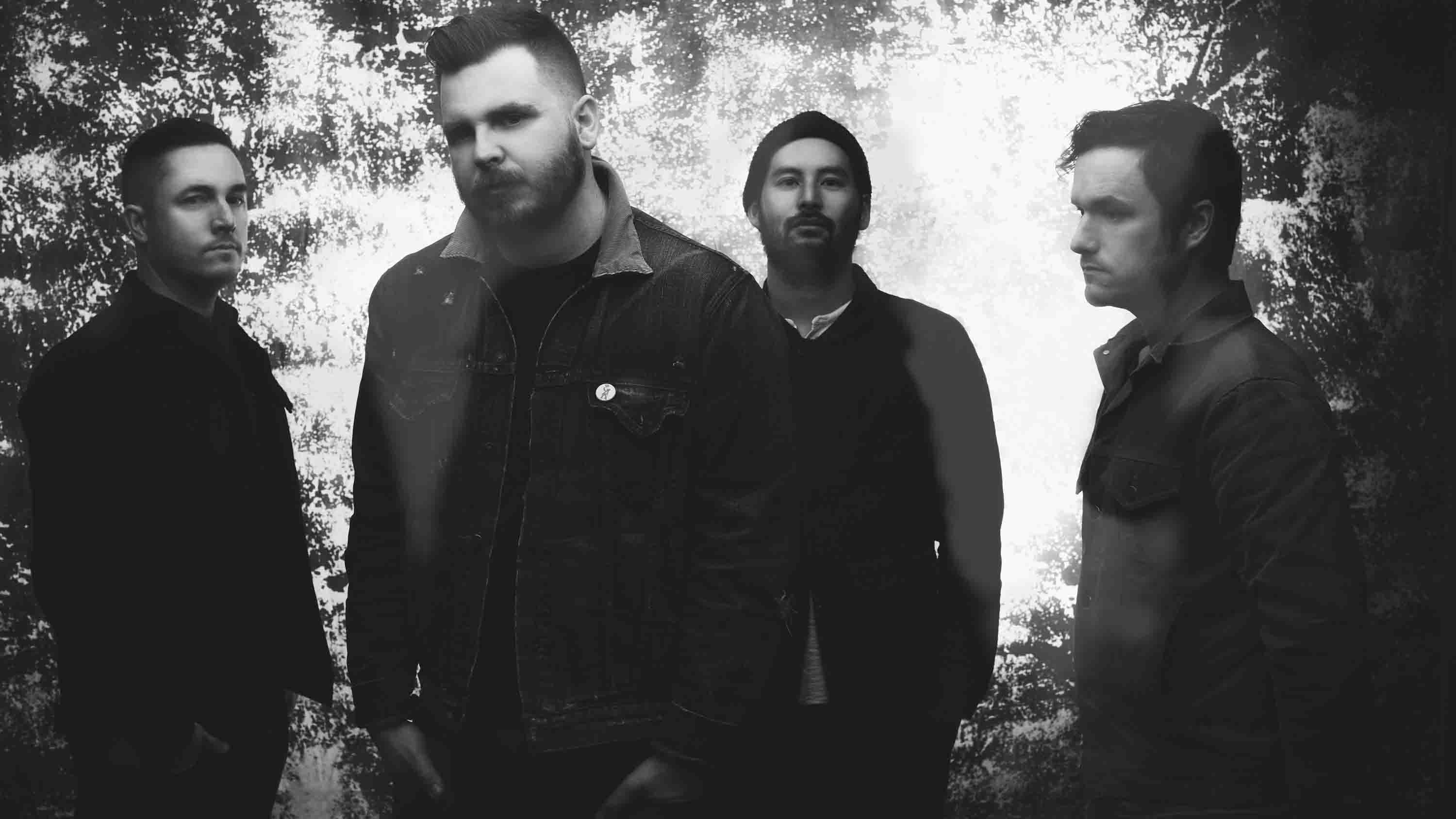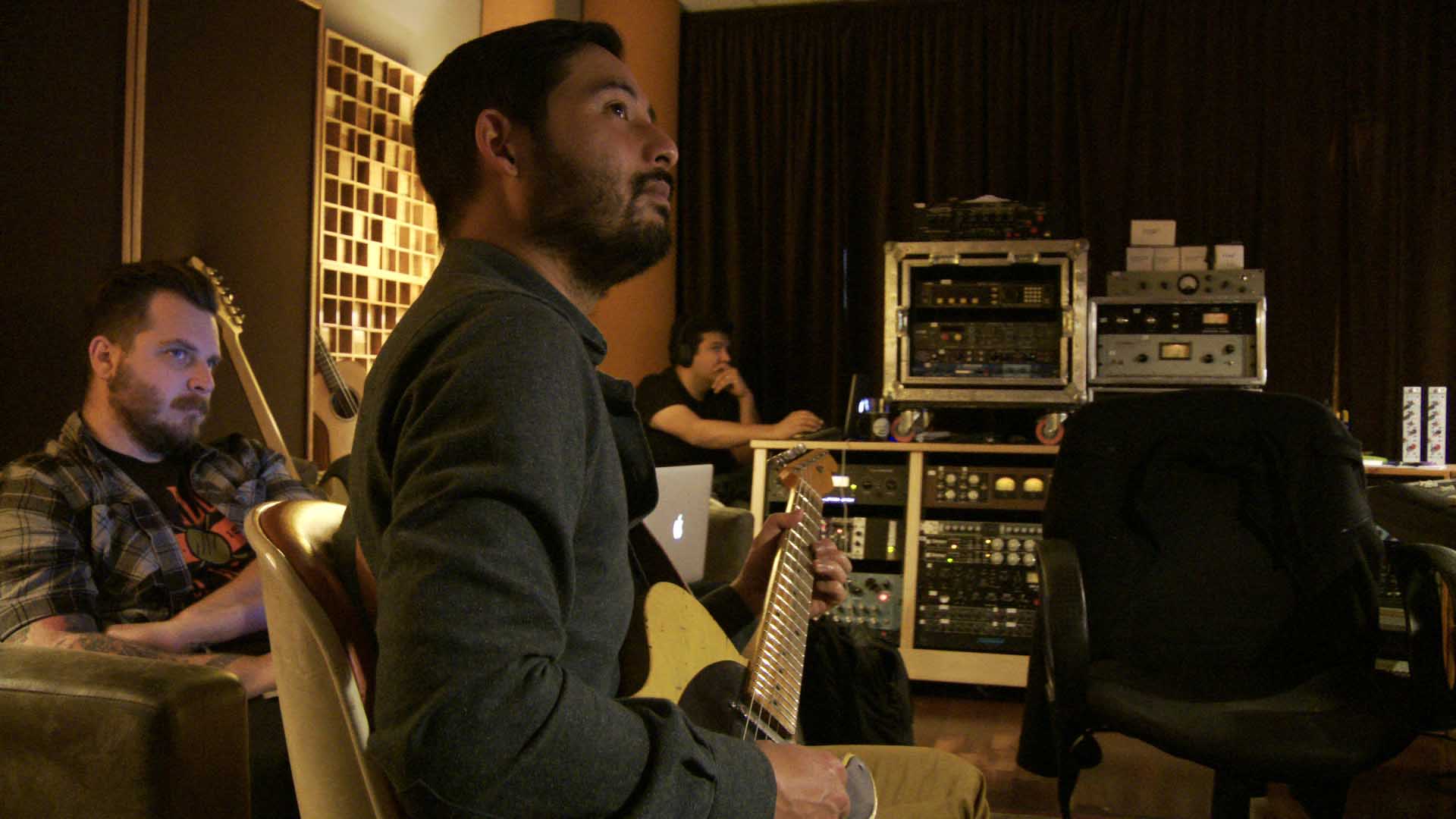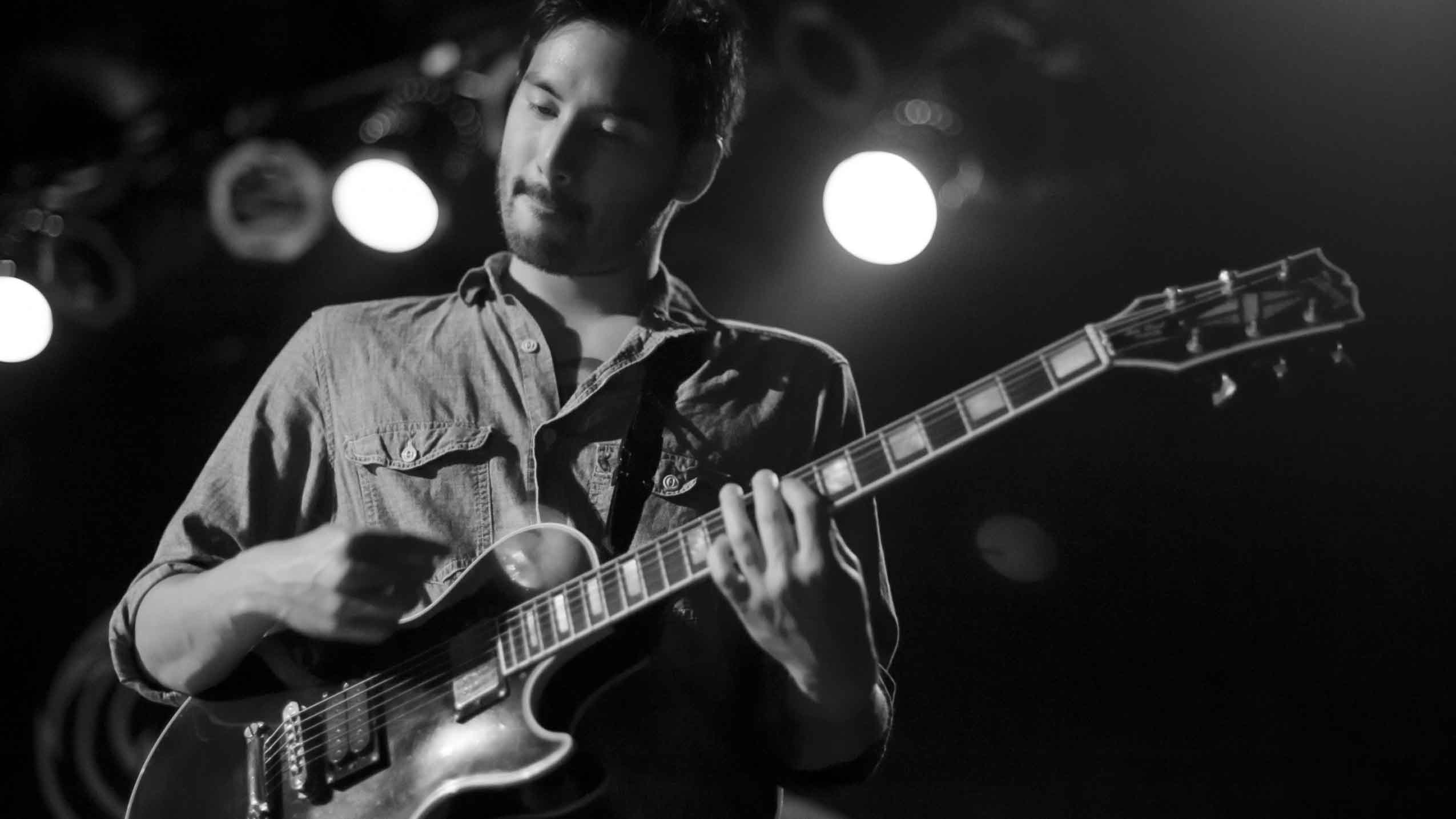Thrice talk working through tension to create To Be Everywhere Is To Be Nowhere
Dustin Kensrue and Teppei Teranishi on guitars, songwriting and the band's triumphant return

Introduction
In the music world, the word 'hiatus' has become a loaded term - fans hear it and expect the worst. It seems to signify irresolvable inter-band tension, from which any band is unlikely to recover. That's not the case with Thrice.
When the longstanding alt-rock outfit announced they would be taking a break at the end of 2011, the timing was frustrating. The band had just released Major/Minor, a determined and cohesive effort that felt like the culmination of all their work thus far, and even though frontman/guitarist Dustin Kensrue opened his official statement with the words “Thrice is not breaking up”, it was hard to avoid despondency, despite the incendiary farewell shows and live album, Anthology, that followed.
Fortunately, the hiatus proved short-lived. Shorter, perhaps, than anyone - even the band themselves - could have predicted.
We honestly weren't sure when we would play music together again - whether it be three years or 20 years
“When we took our hiatus, we really didn't have any idea when we'd reconvene,” says guitarist Teppei Teranishi. “We were very intentional in calling it a hiatus and not a break-up as we knew that we'd play music together again at some point and at whatever capacity, but we honestly weren't sure when that would be - whether it be three years or 20 years.”
During the hiatus, Dustin released a pair of well-received solo albums, but when schedules realigned and the opportunity to create new music with the band presented itself, he jumped at the chance.
“We were already planning on doing at least a couple of festivals in 2015,” he recalls. “And then, basically, I ended up being freed up time-wise to look at doing this again. I started feeling it out with the guys and seeing where they were at, and everybody decided to do it.”

To Be Everywhere Is To Be Nowhere
New album To Be Everywhere Is To Be Nowhere proves they made the right decision, combining the finest elements of the band's post-Vheissu output while breaking new sonic ground.
Come the record's release on 27 May, Thrice will have gone on hiatus, returned, recorded, released and toured a new album in less time than it takes most acts to ready a new full-length. Even after a lengthy break, the band were never short of songs.
“We always had a lot of ideas, and the issue was usually more like, 'What ideas are we actually going to run with and where is this going to go?' Dustin says. “Sometimes we’ll be really excited about something and it just falls really flat when we start jamming together.
“Other times, I’ll be like, 'Hey guys, I have this idea for a beat,' and I’ll really, really horridly beatbox it and everyone laughs and then we start playing. The song The Window literally came from me being like, 'Hey, I have this 7/4 beat in my head,” and we started playing that.”
It was helpful to have more time working on stuff away from each other and then coming back together; it’s more productive
The initial writing process was quite different this time around, however. During the break, Teppei had relocated to Washington, while Dustin, bassist Ed Breckenridge and drummer Riley Breckenridge remained in California. But what initially seemed like a disadvantage ended up benefitting the band more than it hindered them.
“There were challenges, but I think it was actually helpful in a couple of ways because it forced us to get a little bit more organised in how we were sharing ideas,” Dustin says. “We used a program/app called Asana for the team stuff, and it was super-helpful to share all the ideas there; we could comment on them and keep it all organised.
“We weren’t in the studio actually writing 9 to 5, all the time, which is what we’ve done before. It was helpful to have more time working on stuff away from each other and then coming back together; I think it’s more productive. When you get stuck in a room for so long in a row, you lose the excitement of jamming there. That’s something we’ll probably carry into the future, even though Teppei is now back down in California.”

Working through the tension
Besides the writing process, the guitar-playing relationship between Teppei and Dustin has continually evolved over the years to become more fluid and open-ended. Both accomplished players, it's hard to define either as a lead guitarist; gear plays a bigger part in determining who takes what role.
“It used to be a bit more rigid, like anything that was a little more lead-ish, [Teppei] would do,” says Dustin. “But now we push it a little more.”
“There are a variety of factors that might dictate our roles as guitar players, but it's mostly whoever came up with a part will stick to it,” Teppei expands. “There are times when Dustin might be limited to what he's playing based on him simultaneously singing, or there might be a part that relies heavily on an effect pedal that I might not have - Dustin loves his pedals - so naturally, those parts fall on whoever is best equipped to play them.”
We both just play guitar and figure out what needs to happen on each song
“In Hurricane, I am playing in all that lead stuff there, which probably is the best example of it, where you’d imagine that would be him,” Dustin adds. “It’s partly just because I came up with that part and I had the pedal specifically for it; it uses an [Electro-Harmonix] POG 2 on that lead, and it’s subtle but it’s really not the same without it there. We both just play guitar and figure out what needs to happen on each song.”
Nine albums in, the pair are finely attuned to what makes a great guitar part, and TBEITBN is overflowing with them. From tempestuous opener Hurricane through to the hook-heavy post-hardcore of Blood On The Sand and the hazy, Alchemy Index-channelling Salt And Shadow, Teppei and Dustin always play off each others' strengths, forging a rugged bedrock of riffs with a dusting of arpeggiated inverted chords and infectious single-note leads.
One of the album's standouts is Black Honey, a maelstrom of distortion and dissonant guitar melodies that mirrors the song's lyrical focus: swiping honey from bees without contemplating why they'd sting back, a scathing metaphor for US foreign policy. Given the (dis-)harmony between music and lyrics, we wondered which came first.
“It was the music... that’s interesting that you say that,” Dustin ponders. “At some point, that image was just there and the song built around that image. That’s really curious. A lot of times I write lyrics in a way that are inspired by the music, because we almost always write the music first. I really want the lyrics to feel at home there, and the best way to do that is usually to be inspired by the rhythm section, thinking about the flow of the whole song.”
The same songwriting philosophy tallies with Stay With Me, an unashamed out-and-out ballad with a huge chorus, quite unlike any Thrice have recorded before. There are echoes of Dustin's solo material - particularly 2015's Carry The Fire - which the frontman says may have subconsciously had an impact, but Thrice have their own way of working.
It’s a tension that is released in that system of the music, and there’s power to that
“More and more, I want the song itself, the very bones of it, to be really strong,” says Dustin. “With Thrice, part of what’s made our music interesting is that we usually don’t start from that place. And then, as it’s built, I’ll try to take these weird pieces and build what is a really good song out of them.”
“My head is more oriented that way than it has been in the past, which is good, because Ed [Breckenridge, bass]’s head is not oriented that way at all. It’s just ways to make Thrice work if four people with pretty different ideas of where a sound should go have to work through that tension.”
It's precisely that pressure that makes the band such a resilient unit; whether ideas are approved or shot down, Thrice always unite in the end.
“Tension is the right word, and I don’t mean that as bad,” Dustin concurs. “At times, there’s something you’re trying to work out, and then a lot of times you’ll come to a spot where you find that point where everyone meets. It’s a tension that is released in that system of the music, and there’s power to that.”

Honing the tone
As you'd expect from Thrice, TBEITBN is awash with a blend of gritty, natural amp sounds and effected guitar tones, not to mention a well-stocked arsenal of bulldozer riffs. The Window is a case in point, and owes its guttural sound to the baritone, an instrument that has become integral to Thrice's sound over the years.
“Before we were using baritone, we started having a separate guitar when we were tuning for drop A, which would be like D standard with a big thick string, so the heavy strings would be an A and then an octave down of the A,” Dustin recalls. “We were like, 'We need to get lower,' and baritones were a way to get down - and now that we have them around, they come into play more and more.
“Major/Minor had a lot of baritone and this record has a lot, and now we’re getting to the point where a lot of times one of us is on baritone and the other isn’t. We used to be like, 'Okay, everyone is on baritone,' but I think it works out well to have a little bit more separation on the guitars. [The Window] is a very baritone song, though - I think we might both be baritone on that one.”
Dustin and Teppei had a slew of other guitars in the studio, of course, most of which were tuned to D standard with the low D dropped to C. Teppei dusted off his '74 Les Paul Standard - a staple on much of Thrice's early material - for the sessions, as well as employing his old faithfuls: a Nash Tele, baritone Jaguar, and Gibson ES-335.
And while Dustin employed a custom Cave & Canary Solaris baritone (“the most gorgeous guitar I've ever played”), he also relied on offsets from Washington's Nash Guitars, although he's put his own stamp on them.
They’re built like tanks, Fender-style guitars - you can’t really hurt them
“I’ve got Nash Jaguars, and I’ve modded them and put in Lollar humbuckers. There’s a Lollar Imperial High Wind in the bridge, which I just love; it’s a really, really musical bridge pickup. I find so many bridge pickups really brittle, and they work distorted, but they’re just not that clean and they don’t have that sweetness - this a really sweet pickup. Then I've got the El Rayo on the neck - it’s kind of a blend between a single coil and a humbucker.”
As for what drew Dustin to Jags, he can't quite put his finger on it.
“I don’t know what it is, there’s something compelling about it,” he ponders. “I was playing Jazzmasters for a little bit, but I really like the short scale of the Jaguar. It’s really fun to play. It doesn’t feel too small; it just feels great, especially bending and stuff. I have pretty thick strings on it since I’m tuning it down, too.
“I think, too, for me, I like Gibson style guitars a lot; I think they sound great. I played SGs forever, but I don’t like the top-heaviness of SGs. I broke so many of them, and then Les Pauls, they’re too heavy. They’re built like tanks, Fender-style guitars, and so I like that about them - you can’t really hurt them.”

Shifting gear
TBEITBN is notable not just for its breadth and depth of songwriting; it also showcases some of the tastiest and most diverse recorded guitar tones in Thrice's career. That was in part down to producer Eric Palmquist, who offered up his own collection of gear and encouraged the band to step out from the norm…
“Eric intentionally shelved my AC30, which I've used on every record since Vheissu and exclusively on Major/Minor,” Teppei reveals. “He ran a bunch of amps at the same time with varying tones and he'd mix and match to get a tone we thought was appropriate. We used my 6G6 Bassman a lot, and one of my faves of the line-up was Eric's little Watkins Scout. That little thing sounded so rad!”
Dustin, who currently favours a Fender '68 Vibrolux and a New Vintage MK36 (which has been so heavily modified, it's been rechristened as the DK36, after Dustin's name), adds: “Eric’s got some really cool, weird, old amps; I don’t even know what they are, like names I’ve never heard. The beginning of Salt And Shadow, there’s a National amp from the '20s, '30s at the latest - an old, old amp. That was really cool.”
Eric’s got some really cool, weird, old amps; I don’t even know what they are
By pairing these museum-grade amps with a heavy vibrato effect (either from Dustin's Strymon Mobius, or any number of pedals “flying around the studio”), Dustin and Teppei also forged something of a sonic lynchpin for the album, as this tone kicks off Hurricane, Black Honey and Salt And Shadow, effectively bookending the record. That may not have been a conscious decision, says the frontman, but there was a blueprint in mind.
“We were definitely thinking about the two sides aspect of the record, especially with a lot of people listening on vinyl these days,” Dustin explains.
“I really noticed it on the last Arcade Fire record; it’s a double vinyl, but when you listen to it, even just digitally all the way through, you can feel those four quarters of the record. I wanted to make sure that we had the record feel that way, too, both for vinyl and just for listening, so that instrumental track [Seneca], it’s kind of a halfway ending of the first half and then it starts back in with Black Honey.”
As well as amps, Eric had a treasure trove of effects pedals, which also provided a launchpad for tracking - even if Teppei and Dustin didn't expect them to be quite so integral to the process...
We literally had a mound of pedals sitting on the console while we were tracking guitars
“We were really fortunate to get a handful of pedals from a few really amazing pedal companies - Walrus Audio, JHS, Matthews Effects, Mojo Hand FX, to name a few,” Teppei enthuses.
“Eric also had a whole slew of pedals from Earthquaker. I adhere to more of a 'simple is better' mentality to everything in life, including my guitar rig, so I've actually averted too much pedal use in the past, but we literally had a mound of pedals sitting on the console while we were tracking guitars this time 'round.”
“We went into the studio and I thought I would just use the stuff I had, but Eric had a bunch more stuff,” Dustin adds. “Some of the standouts we used were the JHS pedal called the SuperBolt, which mimics an old Supro amp circuit. We used that a lot. This guy Matthews Effects, he’s got a Klon clone, the Architect, that we were using.
“I was using my Strymon pedals a lot. I’ve got all three of their big ones: the TimeLine, the Mobius and BigSky; those are amazing pedals. The [Electro-Harmonix] POG 2 I used a lot. There’s a Mojo Hand fuzz pedal called the Iron Bell; that’s what's also on the lead on Hurricane. It’s not built on any specific Big Muff - it's an amalgamation of some of them, and it's great.”

The future of Thrice
Although there's no question that the band are very much back in action - and the dust is only just beginning to settle on TBEITBN - we had to ask if Thrice's return is a permanent one, and whether we can expect another album down the line.
“I think that’s the plan, so I would say yes,” Dustin confirms, before divulging how the band intend to avoid any more indefinite hiatuses.
“We came back to this with fresh eyes and a clean slate to set it up again, and we decided we’re not going to tour for more than three weeks at a time,” he says. “For the longevity and longterm health of the band, I think that’s going to be huge - just not being away from our families for eight weeks in a row will be a lot more manageable.”
We came back to this with fresh eyes and a clean slate to set it up again
Thrice are in a better place than they've perhaps ever been - compositionally, perspectively, tonally. Talk of the future adds a sense of security to this reunion, but according to Dustin, there was little doubt from the moment the four-piece first got back in a room together.
“It felt great; it felt like coming home to something,” he enthuses. “We’ve just played together so long that it doesn’t take much for us to feel connected again playing.”
Long may that connection reign.
To Be Everything Is To Be Nowhere is out on 27 May via Vagrant Records.
Mike has been Editor-in-Chief of GuitarWorld.com since 2019, and an offset fiend and recovering pedal addict for far longer. He has a master's degree in journalism from Cardiff University, and 15 years' experience writing and editing for guitar publications including MusicRadar, Total Guitar and Guitarist, as well as 20 years of recording and live experience in original and function bands. During his career, he has interviewed the likes of John Frusciante, Chris Cornell, Tom Morello, Matt Bellamy, Kirk Hammett, Jerry Cantrell, Joe Satriani, Tom DeLonge, Radiohead's Ed O'Brien, Polyphia, Tosin Abasi, Yvette Young and many more. His writing also appears in the The Cambridge Companion to the Electric Guitar. In his free time, you'll find him making progressive instrumental rock as Maebe.
